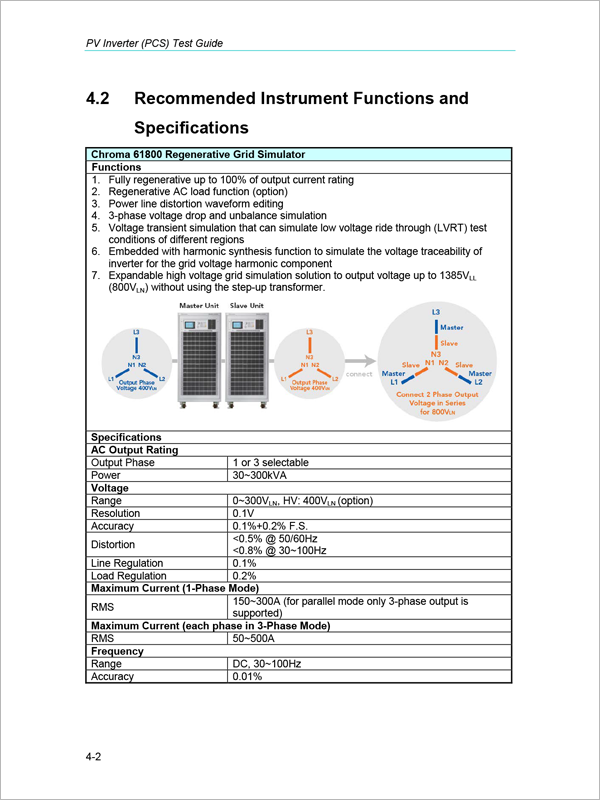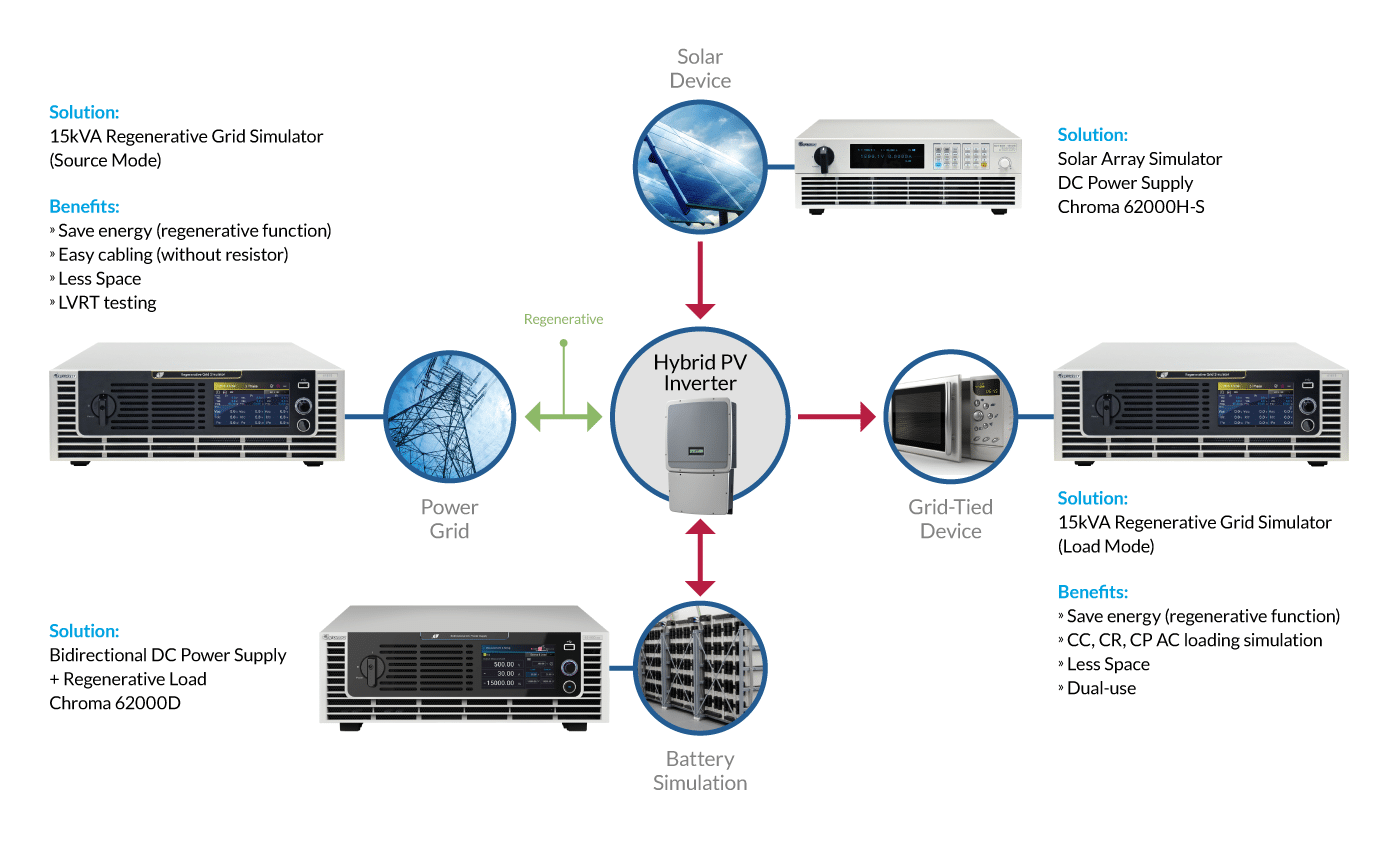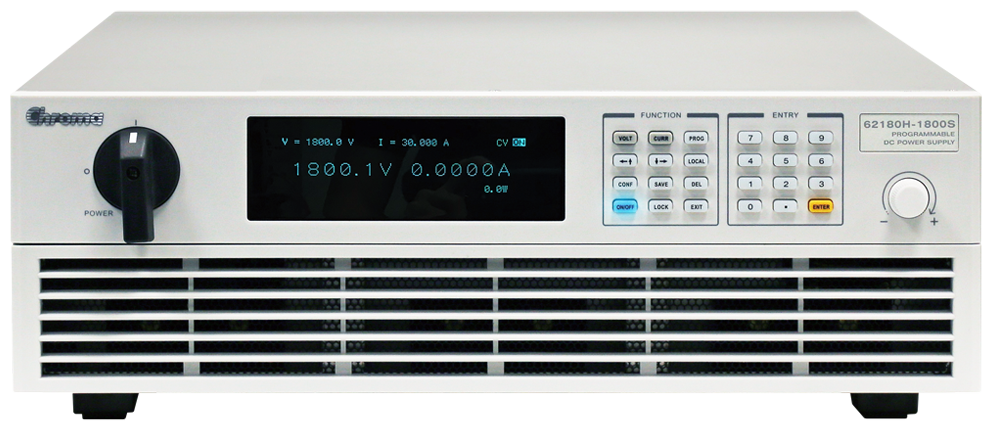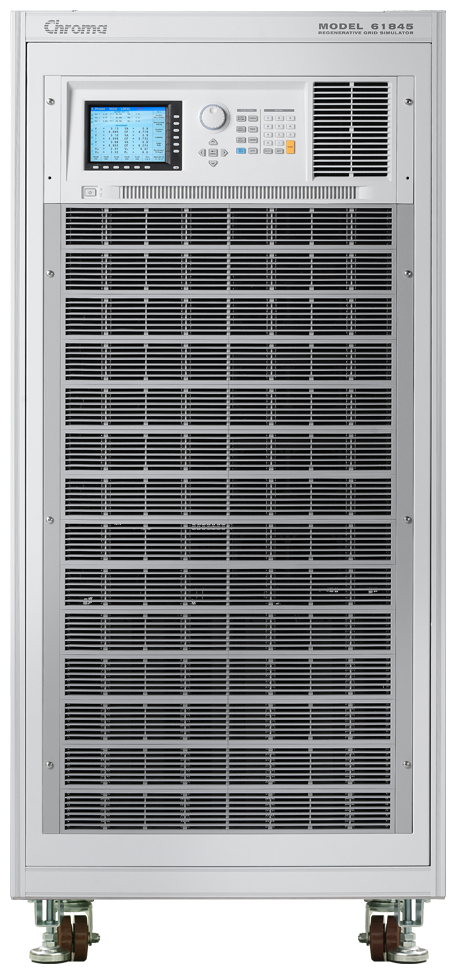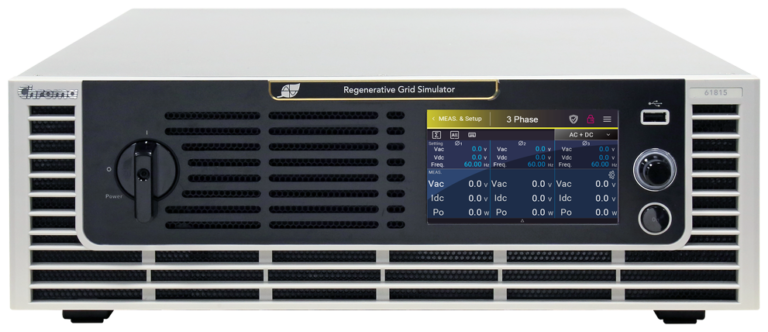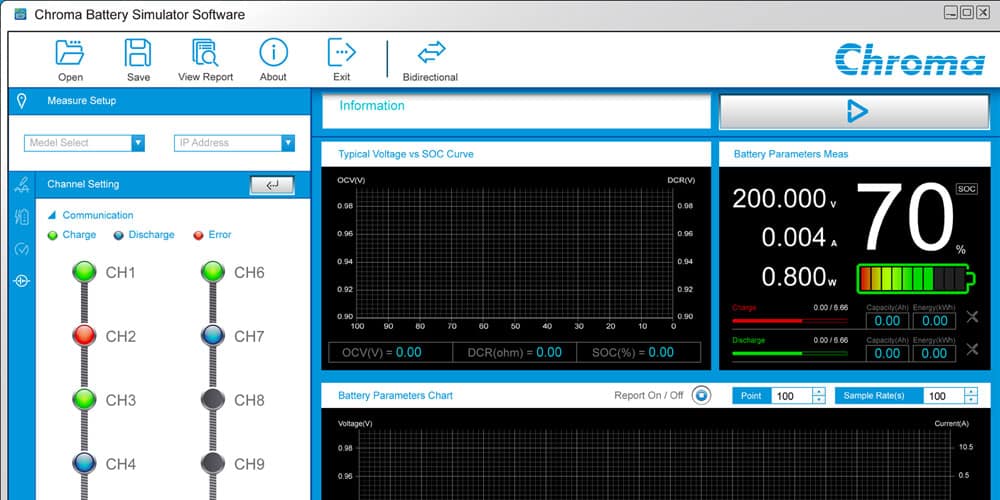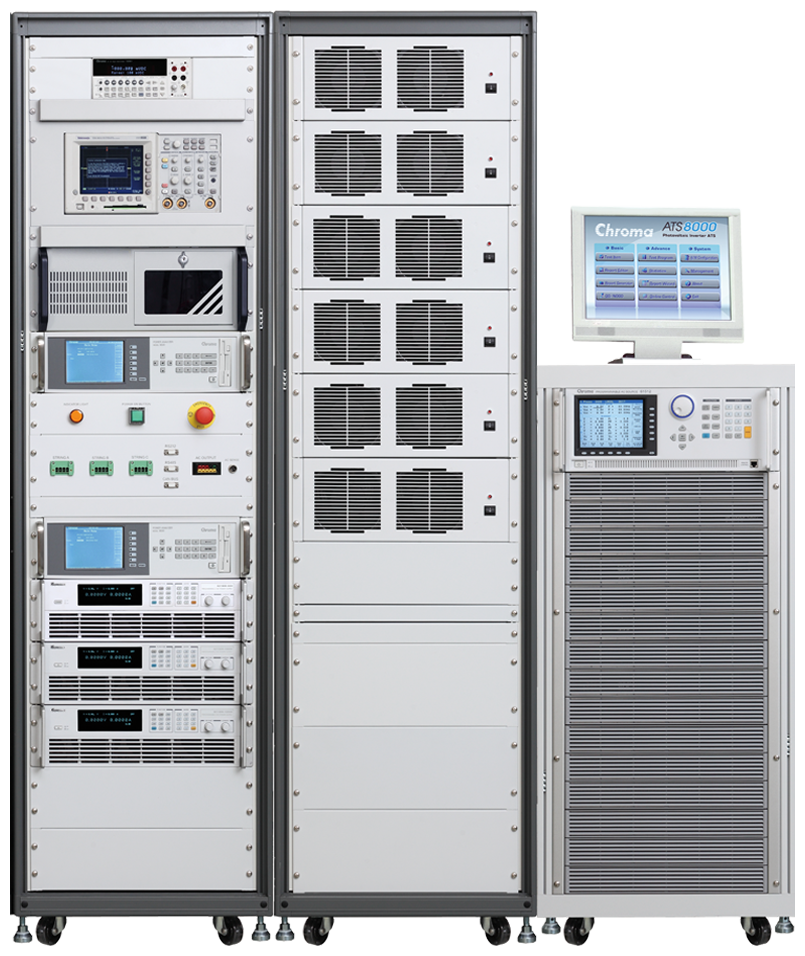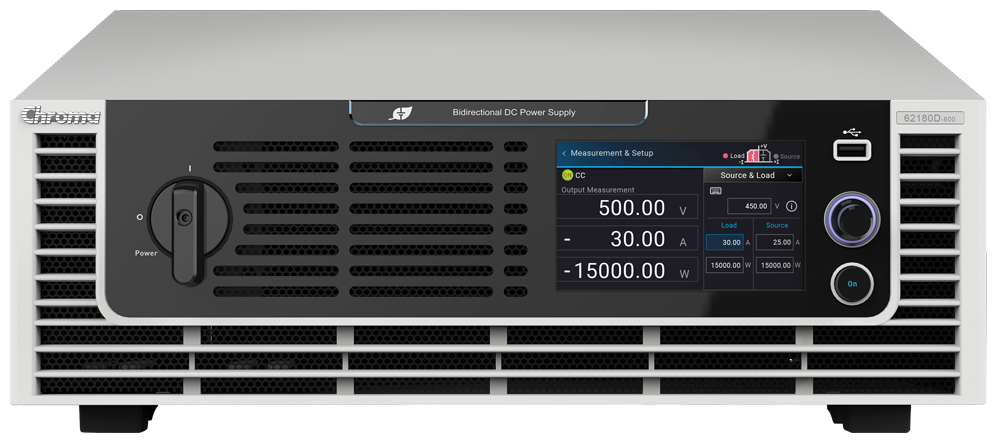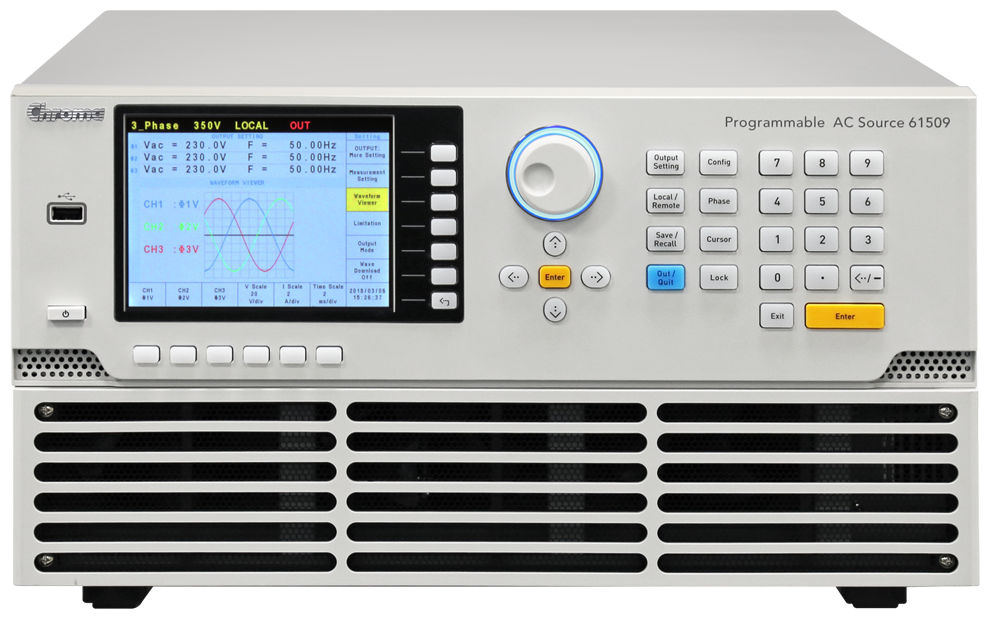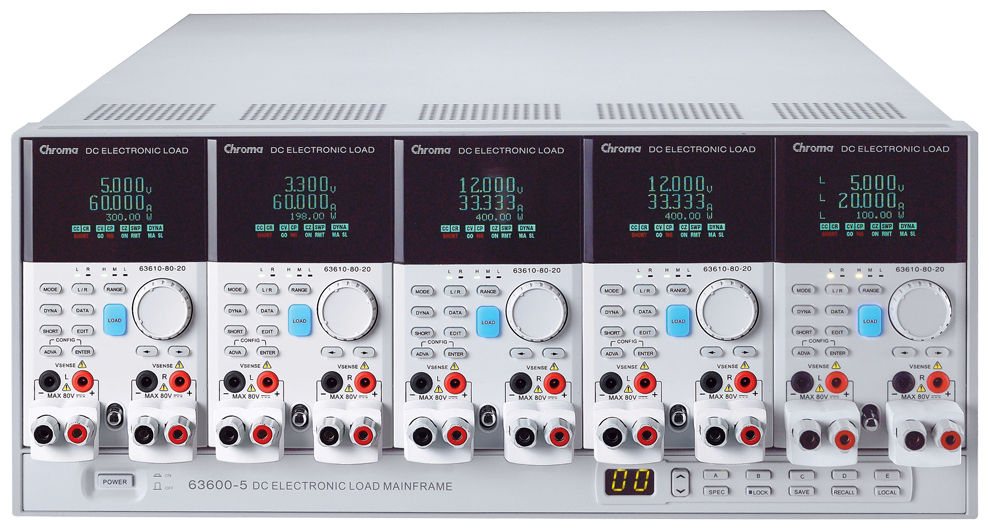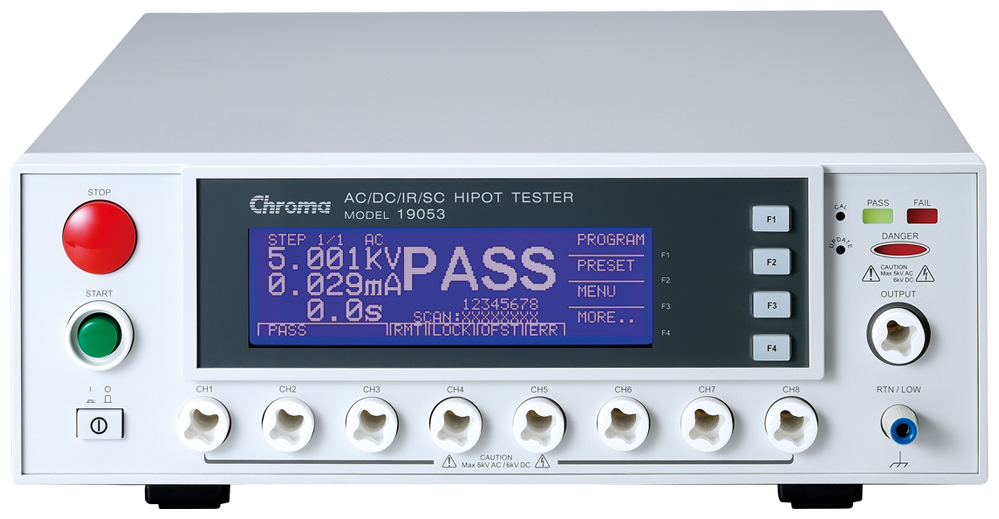Play Video
62000H DC Power Supply with Solar Array Simulation
This is a brief overview and demonstration of the Chroma 62000 series of programmable solar array simulators for PV inverter testing. The Chroma 62150H-600S/1000S programmable solar array simulator has a maximum output power rating of up to 1MW, output voltage range (Voc) from 0 – 1000V and a maximum output current (Isc) of 0 – 1500A.
